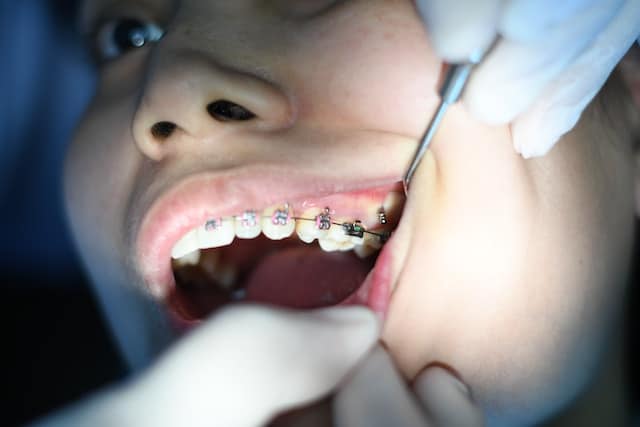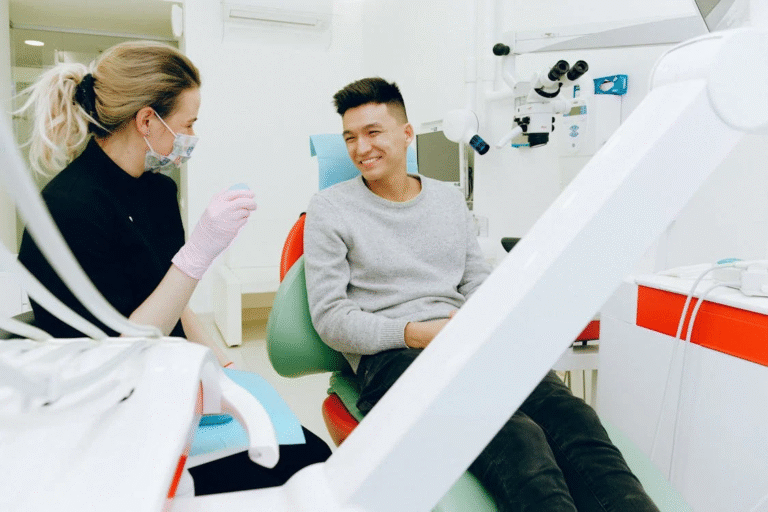Diabetes During Orthodontic Treatment and its Effects
If you’re living with diabetes and planning to get braces, it’s important to understand how the two can affect each other. Diabetes doesn’t mean you can’t get orthodontic treatment, but it does mean you’ll need to take a few extra steps to keep your mouth healthy. From slower healing to a higher risk of gum issues, your condition can influence how your teeth and gums respond during treatment. In this article, we’ll walk you through what to expect and how to manage both diabetes and braces with care.
Effects of Diabetes During Orthodontic Treatment
Here’s a closer look at the effects of diabetes during orthodontic treatment:
1. Effects on Bone and Tooth Movement
- Impaired Bone Healing
Your bones play a major role in how your teeth move. With diabetes, healing slows down. This means that after your braces apply pressure, your bone tissue may take longer to adjust and rebuild. That can affect how smoothly your treatment progresses. - Slower Tooth Movement
Orthodontic treatment depends on steady tooth movement. But in diabetic patients, this process can be slower. The body doesn’t respond as quickly to the pressure from braces, which might extend the overall treatment time. - Risk of Root Resorption
Root resorption is when the root of a tooth starts breaking down. People with diabetes may have a slightly higher risk of this happening during orthodontic treatment. It’s something your orthodontist will keep an eye on with regular X-rays and checkups.
2. Periodontal and Oral Health Issues
- Increased Risk of Periodontal Disease
Gum health is already a concern with braces, and diabetes makes it more challenging. High blood sugar can increase your chances of gum infections, which could lead to more serious periodontal problems if not managed early. - Gingivitis
Gingivitis is an early form of gum disease, causing redness, swelling, and bleeding gums. It’s quite common in diabetic patients, especially during orthodontic treatment. Good oral hygiene and regular dental cleanings become even more important here. - Dry Mouth
Diabetes can reduce saliva flow, which may cause dry mouth. This might not sound like a big deal, but saliva plays a big part in protecting your teeth and gums. Without it, bacteria builds up faster, leading to decay and discomfort, especially around brackets and wires.
Tips for Managing Orthodontic Care with Diabetes
Taking care of your braces or aligners is important for everyone, but if you’re managing diabetes too, it needs a bit more attention. Your blood sugar levels, oral hygiene, and lifestyle habits all play a role in how smoothly your orthodontic treatment goes. Here’s how you can stay on top of it.
1. Before and During Treatment
- Control Blood Sugar Levels
Before starting any orthodontic treatment, it’s important to have your blood sugar under control. High sugar levels can slow down healing and increase the risk of gum issues or infections. Stable levels help your body respond better to treatment and reduce complications. - Consult Your Medical Team
Always talk to your doctor or diabetes care specialist before beginning orthodontic care. They can guide you on how your treatment might affect your health and what adjustments you may need. It’s also helpful if your orthodontist and medical team are on the same page. - Discuss Lighter Forces
Ask your orthodontist if lighter forces can be used during your treatment. This means using gentler pressure to move your teeth, which reduces the risk of inflammation or discomfort. It also helps your body heal better after each adjustment.
2. Oral Care Routine
- Brush and Floss Diligently
With braces, food can easily get stuck, and if you have diabetes, your gums are already more sensitive. Brushing twice a day and flossing daily becomes even more important. Use a soft-bristled brush and take your time to clean around brackets and wires. - Use Mouthwash
Antibacterial mouthwash can help fight off germs and reduce the risk of gum infections. Choose one that is alcohol-free and suitable for sensitive mouths, especially if you already experience dryness or irritation. - Clean Your Tongue
Don’t ignore your tongue. Use a tongue scraper or brush it gently to remove bacteria. This helps keep your breath fresh and your mouth healthier overall. - Address Dry Mouth
Dry mouth is common in people with diabetes and can get worse during orthodontic treatment. Sip water often, avoid caffeine, and try sugar-free gum or lozenges to keep your mouth moist. You can also talk to your dentist about saliva substitutes if needed. More on managing dry mouth in diabetics.
3. Diet and Lifestyle
- Follow a Soft Diet
When your braces are tightened or you switch aligners, your mouth might feel sore. Eating soft foods like cooked vegetables, rice, soups, and yogurt can help. It also reduces the risk of damaging your braces or irritating your gums. - Limit Sugary Foods
It’s always important to watch sugar when you have diabetes, but even more so with braces. Sticky or sugary foods can get trapped and increase your risk of cavities and gum problems. Stick to balanced meals and healthy snacks. - Quit Smoking
If you smoke, it’s a good time to quit. Smoking affects blood flow, which slows healing and raises your risk of infections. It also stains your braces and makes oral hygiene more difficult. - Professional Care
Keep in touch with your dentist and orthodontist regularly. Let them know if you notice anything unusual like swelling, bleeding gums, or persistent discomfort. Early treatment prevents bigger problems later. - Attend Regular Dental Visits
Don’t skip your dental checkups. These visits help catch small issues before they turn into major ones. Your dentist can also clean around your braces or aligners more thoroughly than you can at home. - Schedule Early Morning Appointments
If your blood sugar is usually more stable in the morning, try to schedule appointments earlier in the day. This can help reduce stress and keep you feeling more balanced during and after your visit. - Be Prepared for Emergencies
Always carry a small kit with dental wax, pain relief, and any emergency contacts. If a wire breaks or a bracket comes loose, you’ll be ready to handle it until you can see your orthodontist. Also, keep some snacks or glucose tablets with you in case your sugar drops unexpectedly.
Closing Thoughts
Living with diabetes while undergoing orthodontic treatment takes some extra care, but it’s completely manageable with the right steps. Keeping your blood sugar in check, following a proper oral routine, and staying in touch with both your doctor and orthodontist can make a real difference. Everyone’s journey is different, so stay patient and informed throughout. A little more attention now can help you get the healthy smile you’re working toward, without added stress.








Leave a Reply